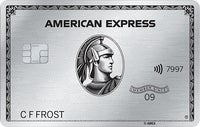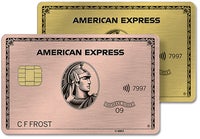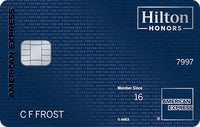Best credit cards with annual credits



The top premium rewards cards generally have high annual fees. Thankfully, some cards help minimize the sting of that cost with annual statement credits on popular expenses like travel, dining and shopping.
The best credit cards with annual credits offset all or most of the fees by themselves without considering the value of the rewards you’ll earn by using the card. Let’s look at some of the annual credits you can get to help with your everyday expenses.
Comparing the best credit cards with annual credits
The best credit cards with annual credits offer statement credits for various expenses and come at different price points. Here’s a comparison of our top choices.
| Card name | Best for | Highlights | Annual fee | Bankrate score |
|---|---|---|---|---|
| The Platinum Card® from American Express | Overall value |
|
$695 | 4.8 |
| Chase Sapphire Reserve® | Travel perks |
|
$550 | 5.0 |
| Capital One Venture X Rewards Credit Card | Affordability |
|
$395 | 5.0 |
| American Express® Gold Card | Dining credits |
|
$325 | 4.9 |
| Hilton Honors American Express Aspire Card* | Hotel credits |
|
$550 | 4.2 |
Top credit cards with annual credits

The Platinum Card® from American Express
-
The Amex Platinum is one of the best all-around cards for annual credits, offering numerous options for everyday expenses and luxury brands. You’ll be eligible for credits toward high-end brands like Equinox and Saks Fifth Avenue while getting a Walmart+ membership and flexible credits for streaming and travel expenses.
Amex also includes luxury travel perks like Global Entry or TSA PreCheck credits, CLEAR membership and comprehensive lounge access. If you can fully utilize the card’s offerings, your return will surpass the high annual fee.
-
Pros
- The Amex Platinum offers credits that cover a more comprehensive range of categories than any card.
- You can extract more value from this card than any other card.
Cons
- This card’s everyday spending reward rates are mediocre, making it similar to a high-end coupon book.
- Getting full value from this card can be difficult and cause unnecessary spending.

Chase Sapphire Reserve®
-
The Chase Sapphire Reserve offers a $300 annual travel credit that you can use for a wide range of travel expenses, including rarely covered categories like parking and transit. This credit complements the card’s premium travel perks well. You can also get extra value through monthly Doordash credits for restaurant and non-restaurant orders. While these are more difficult to maximize, they can provide savings across many categories.
-
Pros
- The annual travel credit automatically applies to qualifying purchases.
- Doordash credits work for any merchant listed if you pay with your card.
Cons
- You don’t earn rewards for spending the $300 travel credit.
- The Doordash credits essentially only offset the service fees and gratuity, so your actual savings are less than they might seem.

Capital One Venture X Rewards Credit Card
-
If you don’t want to do a lot of math to determine if you’re getting proper value from your annual credits, the Capital One Venture X may be the card for you. The annual travel portal credit and anniversary bonus points completely offset the annual fee, making this an affordable option to break into the premium travel card ecosystem. See Rates & Fees. Since you’ll also get straightforward flat-rate rewards, this is one of the best hassle-free options for a top-tier card.
-
Pros
- The card offers premium perks at an affordable price and with minimal effort.
- Your bonus points can redeemed for statement credits towards travel or transferred to travel partners.
Cons
- You must book through the travel portal to use the annual credit.
- The card may not be the best option if you don’t travel often or want bonus reward categories.

American Express® Gold Card
-
The Amex Gold card is one of the top cards for foodies, offering exceptional reward rates and plentiful dining credits. You can get monthly dining-related credits with Dunkin, Grubhub and other select merchants, and Uber Eats, which gives you credits for just about any level of food purchase. The card has recently added a semi-annual credit for Resy restaurants, offering high-end options. If dining is a significant expense for you, this card is an optimal choice.
-
Pros
- The food credits and top reward rates are a powerful combination for foodies.
- Regular shopping at restaurants and U.S. supermarkets can provide substantial reward returns.
Cons
- The numerous credits can make the card feel like a glorified coupon book.
- Since the card offers little value beyond food-related credits and purchases, the cost may be difficult to justify.

Hilton Honors American Express Aspire Card
-
The Hilton Aspire card can significantly improve your travel experience if you’re a regular Hilton guest. You’ll get semi-annual Hilton resort credits and credits for flight expenses and CLEAR Plus, which can easily offset the annual fee. The card also gives you automatic Diamond elite status, providing even more on-property perks and credits. The Aspire can help you go on any Hilton vacation with significant money already in your pocket.
-
Pros
- This card offers outstanding earning potential at Hilton properties.
- The flight credit is easier to use than the incidental credits of other Amex cards.
Cons
- You’ll need to be a regular Hilton guest to get proper value from this card.
- Other Hilton cards earn better rewards and provide easier-to-achieve milestone rewards.
How to choose the best credit cards with annual credits
Choosing a card with annual credits comes down to your lifestyle and spending habits. Think about recurring expenses you have each year, and consider these categories to see which cards can help with those costs.
- Travel expenses: Travel cards with annual credits can help alleviate some of your costs, particularly when the need for unexpected travel or delays in your travel arises. Paying high last-minute travel costs won’t sting as much if you have a travel credit in your pocket. Travel planners can also factor these credits into their plans and budgets when booking travel well in advance.
- Dining expenses: Consider your regular dining expenses. Depending on your tastes and budget, there are credits covering everything from a daily coffee stop to a high-end restaurant. If you spend a lot on food, you might look at a card offering multiple food credits and high rewards, like the Amex Gold.
- Lifestyle habits: Whether you have streaming subscriptions or like to shop at Walmart or high-end stores, you can find credits covering various lifestyle expenses. With the Amex Platinum, you can even get discounts on your gym membership with Equinox. Make sure these are expenses you naturally have, as spending unnecessarily just to use a credit defeats the purpose of having it.
- Brand loyalty: If you have loyalty or elite status with a particular brand, see if your card can supplement your experience. A top-tier co-branded card could offer you additional ongoing credits and perks to further enhance your travel experience.
Maximizing credit cards with annual credits
Using your annual credits provides an easy way to maximize your card’s value. Here’s a comparison of how annual credits affect the net cost of our card choices, assuming you fully maximize the value of every available annual credit. However, this may be difficult with some cards, so you should keep that in mind. Maximizing every perk is very lifestyle-specific, so make sure you’re not going out of your way to spend money to use perks you wouldn’t naturally utilize.
For this comparison, credits that aren’t earned annually, like Global Entry and TSA PreCheck, are divided over the period in which they are earned.
| Card | Annual credit value | Annual fee | Gain in value |
|---|---|---|---|
| The Platinum Card® from American Express | $1,624 | $695 | +$929 |
| Chase Sapphire Reserve® | $630 | $550 | +$80 |
| Capital One Venture X Rewards Credit Card | $430 | $395 | +$35 |
| American Express® Gold Card | $424 | $325 | +$99 |
| Hilton Honors American Express Aspire Card* | $799 | $550 | +$249 |
Frequently asked questions
What’s next?
Check out these Bankrate tools to match your next card.
The bottom line
If you have a rewards card with a high annual fee, see if it offers annual credits that may offset the cost by giving you money back on certain purchases. You will still pay the annual fee every year, but the credits can balance the scale in your favor and make the card profitable for you in the long term.
Why we ask for feedback Your feedback helps us improve our content and services. It takes less than a minute to complete.
Your responses are anonymous and will only be used for improving our website.
You may also like


Best credit cards for paying off debt

Best credit cards for shopping



